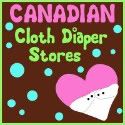

Over four MILLION disposable diapers are discarded in
The effluents from manufacturing the plastic, pulp and bleached paper for disposable diapers are damaging to the environment. 2.4 million trees in
Most parents using disposable diapers do not dispose of solid waste properly by dumping them into the toilet. The untreated waste placed in landfills by dirty disposable diapers risks contaminating ground water.

Babies have diapers in contact with delicate areas 24 hours a day. Many parents have concerns about chemical exposure from exposure to disposable diapers. A diaper has more prolonged contact with your baby’s skin than anything else in their wardrobe or environment. The fluffy part of disposables is a pulp which is produced by chemically treating wood fibres. The pulp is whitened and softened when it is exposed to either chlorine-based or other bleaching agents. The waterproof part of throw-away diapers is made out of plastic. Disposable diapers are absorbent because they contain tiny beads of a substance called sodium polyacrylate. This chemical turns into gel-like crystals when wet. No long term research has been conducted to study the effect of this chemical on young children. Disposable diapers may also contain dioxins, pthalates, petrolatum, polycyclic aromatic hydrocarbons, inks, perfumes, polyurethane and adhesives. Do you REALLY want any of these chemicals touching your baby's skin?
Purchase and launder your own cloth diapers and save hundreds or thousands of dollars compared to using disposables or a diaper service. When your child has potty learned, you will have diapers left to sell or to use for your next baby. It is possible, using a cloth diapering system of flats or prefolds and covers, to cloth diaper a baby for under $300 total, through to potty learning.


0 comments:
Post a Comment